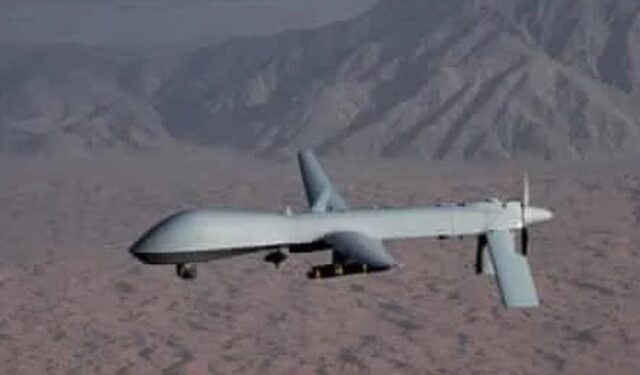Deception is an essential tool for any military or intelligence operation. Prior to the arrival of satellites, manned fixed-wing surveillance aircraft and drones, military planners had an easier time of hiding their troop movements and preparations for offensives. In the 19th Century Generals could use hot air balloons with an observer, planted in a basket dangling below the gas filled orb, peering through a spyglass trying to locate enemy forces and troop movements. This only provided a very limited glimpse of the order of battle and could easily be disrupted by clouds, generated by explosions on the ground or by Mother Nature, that obscured the landscape. The 19th Century Generals also relied heavily on human spies.
During the first half of the 20th Century, technological advances in flight (e.g., fixed-wing aircraft) and electronic communications expanded the ability of military planners to detect enemy activity and locations. But the business of trying to determine what the enemy force was doing was a double-edged sword. A savvy commander, for example, could have the same group of troops march repeatedly through an area under observation to create the impression that his force was much larger. Confederate Generals in the American Civil War, for example, used this tactic several times. That is one form of deception.
The art of deception starts with the assumption that the enemy is collecting intelligence on the size, capability, location, and intention of your military forces. Your job, as a master of deception, is to convince your opponent that you are going to take a particular course of action by feeding the enemy information that focuses their attention on the false target and away from the real objective.
One of the most famous examples from World War II was Operation Bodyguard. The Brits get credit for coming up with this deception.
Operation Bodyguard was the code name for a World War II deception strategy employed by the Allied states before the 1944 invasion of northwest Europe. Bodyguard set out an overall stratagem for misleading the Oberkommando der Wehrmacht as to the time and place of the invasion. Planning for Bodyguard was started in 1943 by the London Controlling Section, a department of the war cabinet. They produced a draft strategy, referred to as Plan Jael, which was presented to leaders at the Tehran Conference in late November and, despite skepticism due to the failure of earlier deception strategy, approved on 6 December 1943.
Bodyguard was a strategy under which all deception planners would operate. The overall aim was to lead the Germans to believe that an invasion of northwest Europe would come later than was planned and to expect attacks elsewhere, including the Pas-de-Calais, the Balkans, southern France, Norway and Soviet attacks in Bulgaria and northern Norway. The key part of the strategy was to attempt to hide the amount of troop buildup in Southern England, by developing threats across the European theatre, and to emphasise an Allied focus on major bombing campaigns.
The main stratagem was not an operational approach; instead it set out the overall themes for each subordinate operation to support. Deception planners in England and Cairo developed a number of operational implementations (of which the most significant was Operation Fortitude which developed a threat to Pas-de-Calais).
Operation Fortitude featured General George S. Patton as the head of a fictitious army that was going to land at Pas-de-Calais. This deception included setting up bases in England filled with inflatable tanks, trucks and artillery pieces, and massive amounts of radio traffic that persuaded the Germans monitoring the intercepted messages and photos from reconnaissance planes that Patton would lead the invasion of Europe.
The Brits were very good at these deception operations, but the Soviets were better. Maskirovka is the Russian term for preparing and delivering a massive sucker punch without alerting the enemy to the Russian intentions. Operation Bagration is an iconic example:
By mid-war the Soviets had fully mastered radio discipline and communications security. Camouflage techniques had progressed significantly, and the Soviets had largely mastered the difficult task of quickly relocating troops to take advantage of German weak points. Zhukov noted that by that time the Soviets were much better at keeping their intentions secret and at spreading disinformation and misleading the enemy. By then most Soviet units were using code tables in all radio and telephone transmissions. Codes were being changed every 24 hours, and cipher keys were being transmitted only by courier. An extremely detailed maskirovka component was included in each operational plan.
In Belorussia, as part of Operation Bagration in mid-1944, Soviet tanks and guns rolled out of the swamps on the northern edge of the Pripet Marshes, surprising German defenders. Undetected by the Germans, Soviet engineers had laid wooden causeways, creating makeshift roads for the Soviet armor that made gains of 25 miles per day against the startled Germans, who dropped back against the remorseless onslaught.
The planning of Operation Bagration was kept so secret that the Soviets were able to have partisans strike German Army Group Center’s key transportation points. Deception efforts had encouraged the Germans to reinforce the southern sector of the front while the decisive blow hit in the north. The destroyed railroad lines meant that the Germans could not easily redeploy their armor where it was most needed.
Kudos to Patrick Armstrong for his incisive observation that modern deception in the age of vast Intelligence, Surveillance and Reconnaissance (aka ISR) capabilities is a vastly more difficult challenge compared to what was employed in World War 2. Tolkien’s Eye of Sauron has become a reality in the 21st Century, i.e., an all-seeing eye that can pierce the battlefield and behind. It is highly unlikely that Ukraine or Russia can assemble a large army in one particular sector of the battlefield without being detected. The United States has ignored deception on this front by regularly announcing the deployment of troops and equipment to Ukraine’s border.
When it comes to the war in Ukraine, it appears that Russia enjoys a massive advantage in maskirovka because NATO lacks a coherent strategy and is under enormous pressure to pander to domestic politics. Then there is social media and the internet. It is a powerful means of shaping public opinion and confusing intelligence analysts. Western fixation on Prigozhin and the Wagner Group is a prime example. Americans and Europeans have been bombarded with stories and videos about the latest antics of Wagner. So answer this question — where is the rest of the Russian Army? The Western media rarely reports on the activities and status of the rest of the Russian Army except when a commander, like General Popov, is removed from command. What is odd about the Popov story is that he has been sent to lead Russia’s military operations in Syria rather than being cashiered. Maskirovka? Perhaps.
Maskirovka is a lot like fly fishing. The deception planners have to figure out how to bait the hook with something the Western public and military planners will readily swallow. It would not surprise me that Russia has been feeding the West stories about chaos in the Russian military, Putin’s isolation and illness, and terrible morale. We already see that many senior officials in the United States and Europe embrace these memes. If Western leaders are persuaded that Russia is teetering on the brink of collapse they are more likely to dismiss intelligence reports and ignored evidence that tell the opposite story.
My suggestion is simple — take everything you read in the media and on the internet with a big grain of salt. I believe that Russia’s military planners continue to embrace deception as a central component of their military strategy and tactics and that many in the West are ignoring this concept. Conversely, the United States and its NATO allies — enamored of social media — are focused of doing information warfare to the exclusion of other camouflage operations. The end result is confusion — NATO is struggling to figure out what Russia will do to bring the military operation in Ukraine to an end.











